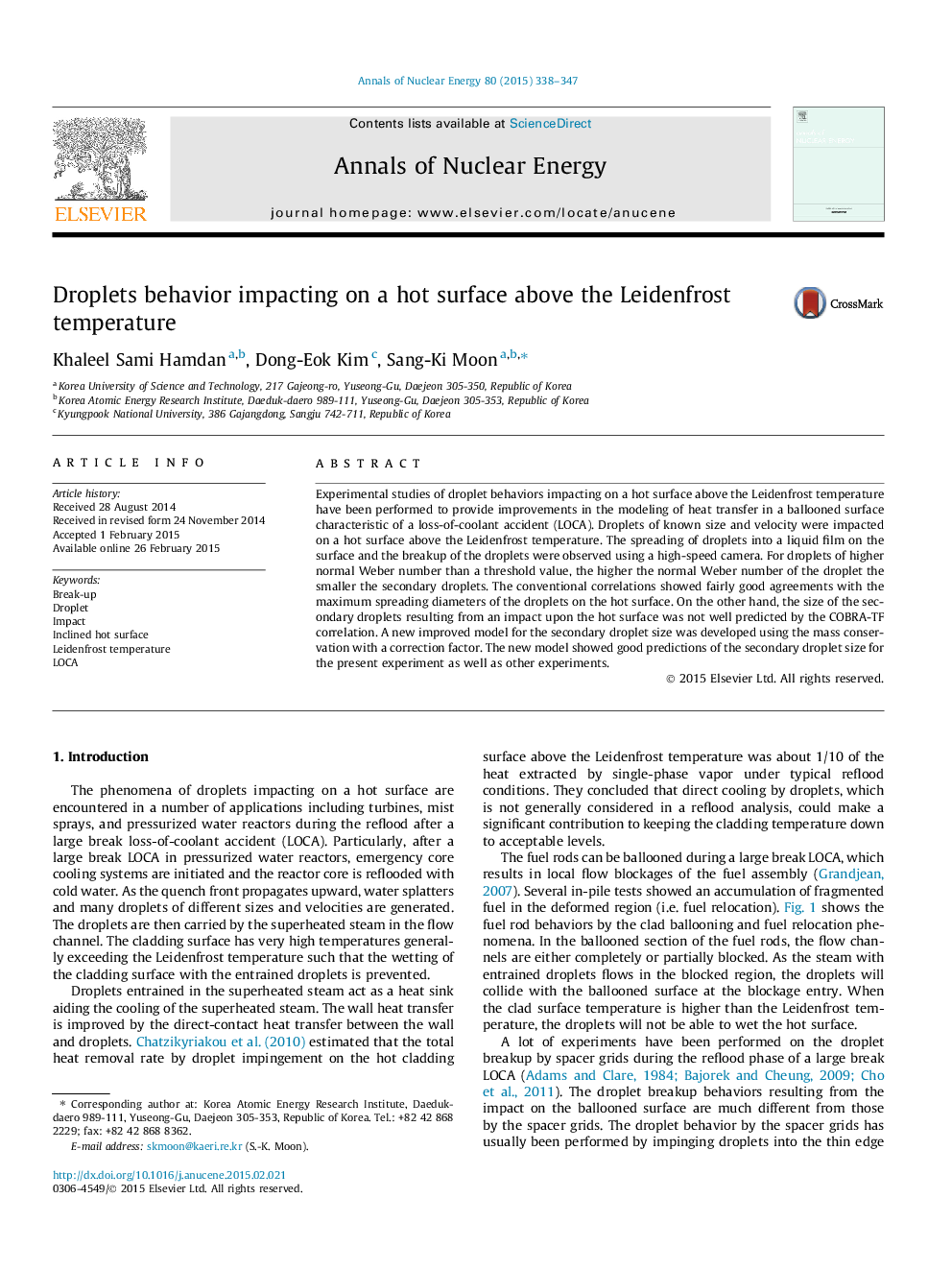| Article ID | Journal | Published Year | Pages | File Type |
|---|---|---|---|---|
| 8068812 | Annals of Nuclear Energy | 2015 | 10 Pages |
Abstract
Experimental studies of droplet behaviors impacting on a hot surface above the Leidenfrost temperature have been performed to provide improvements in the modeling of heat transfer in a ballooned surface characteristic of a loss-of-coolant accident (LOCA). Droplets of known size and velocity were impacted on a hot surface above the Leidenfrost temperature. The spreading of droplets into a liquid film on the surface and the breakup of the droplets were observed using a high-speed camera. For droplets of higher normal Weber number than a threshold value, the higher the normal Weber number of the droplet the smaller the secondary droplets. The conventional correlations showed fairly good agreements with the maximum spreading diameters of the droplets on the hot surface. On the other hand, the size of the secondary droplets resulting from an impact upon the hot surface was not well predicted by the COBRA-TF correlation. A new improved model for the secondary droplet size was developed using the mass conservation with a correction factor. The new model showed good predictions of the secondary droplet size for the present experiment as well as other experiments.
Related Topics
Physical Sciences and Engineering
Energy
Energy Engineering and Power Technology
Authors
Khaleel Sami Hamdan, Dong-Eok Kim, Sang-Ki Moon,
